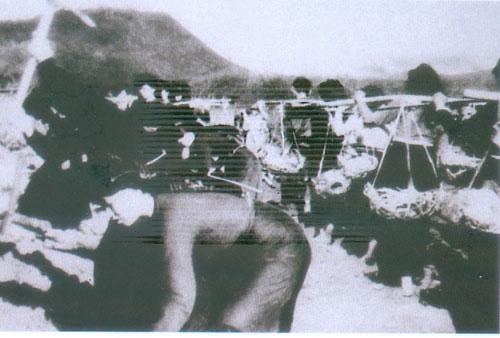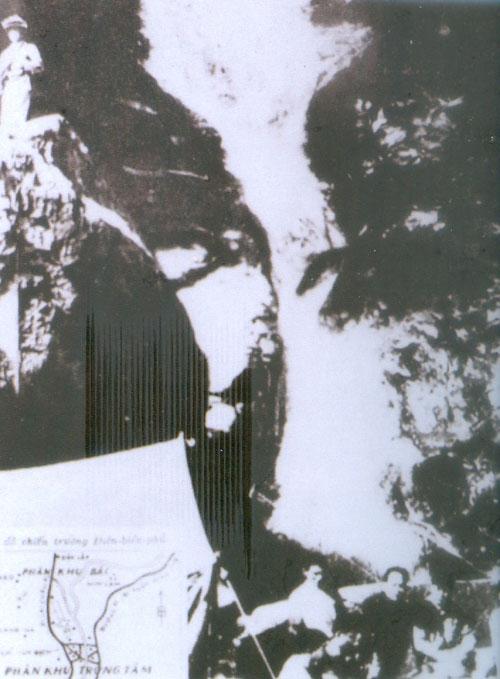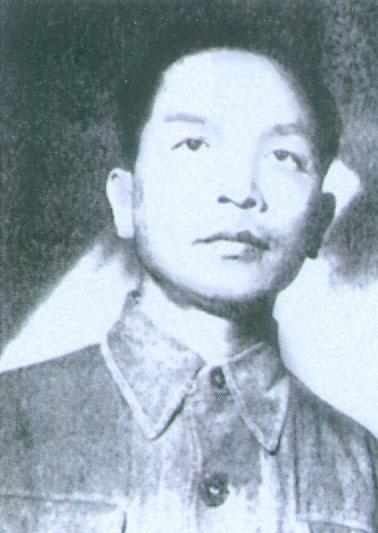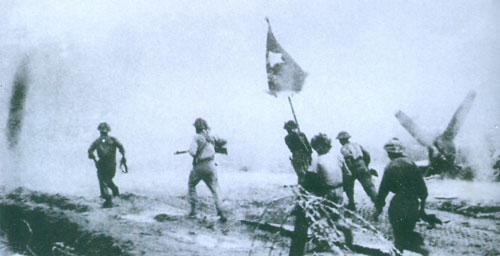Chi tiết tin - Quảng Bình (Tiếng Anh)
The Dien Bien Phu Campaign
The "Determine to Fight, Determine to Win" flag flying from French General de Castries’ bunker1. The South Hong Cum division: a group of entrenched camps consisting of an artillery battlefield and Hong Cum airport, preventing the Vietnamese force from accessing from the South.
2. The North division: consisting of two resistance centers Doc Lap and Ban Keo forming three resistance centers along with the Him Lam entrenched camps. These resistance centers help protect Dien Bien Phu from the North.
3. The Muong Thanh Center division: consisting of five groups of entrenched camps with two thirds of their force: Him Lam, Tay Bac (North West), Tay Nam (South West) and entrenched camps: 105, 106, 206, 311, 311A, 311B, and 310. The two groups uphill on the East housed the following entrenched camps: E1, D1, D2, C1, C2, and A1. Downhill, there were more entrenched camps: 505, 505A, 506, 507, 508, 509, and 210.
Situated at the center was French General De Castries’ headquarters surrounded with several entrenched camps. There were 16,200 soldiers on the French side with weapons and facilities provided by the Americans. Both the French and Americans considered Dien Bien Phu the most indestructible of the entrenched camps.
In response to these activities after analyzing the strengths and weaknesses of the Dien Bien Phu, the Standing committee of the Viet Nam Workers’ Party Central Committee determined to destroy these entrenched camps. With the spirit of "All for the battle front, all for victory", Vietnamese people all over the country were eager to be conscripted laborers whose tasks were building and repairing roads, transferring food, medicines and weapons by various means of transportation. Soldiers and people built roads across mountains and over streams, transferring twenty-four 105mm short-barrel mortar, twenty-four 37mm anti-aircraft artillery across mountains and rivers to the battlefield.
After fifty-six days and nights of fierce fighting that included three waves of undaunted onslaughts, on May 7, 1954, the Vietnamese army wiped out the Dien Bien Phu entrenched camps. This victory, and subsequent battles, forced France to sign the Geneva Agreement, restoring peace in Indochina.
 |
|
President Ho Chi Minh and the Standing Committee of the Party Central Committee decided to launch the Dien Bien Phu Campaign. |
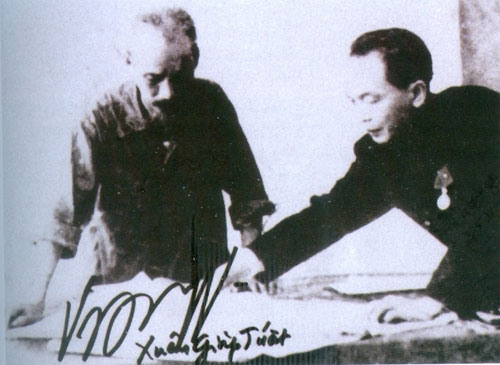 |
|
President Ho Chi Minh and General Vo Nguyen Giap discussing the battle plan for the Dien Bien Phu Campaign. Before General Vo Nguyen Giap departed for the battle, President Ho Chi Minh said: "The General has absolute power in decision-making. You can report to us later". When departing, President Ho Chi Minh also said: "This is a crucial battle. You have to fight until victory. Fight only if you are sure of victory. Otherwise, do not fight." |
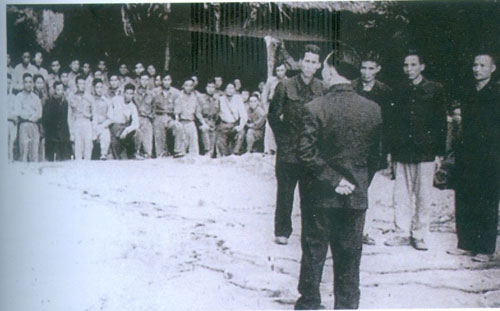 |
|
General Vo Nguyen Giap, Commander-in-chief of the Dien Bien Phu Campaign, giving orders for unit commanders to implement the plan "Fast Strike, Fast Victory" at Tham Pua (First Command, January 14, 1954). With such a plan, the strike day was scheduled for January 25, 1954. They planned to occupy Dien Bien Phu in three days and two nights with massive onslaughts. |
|
|
|
Conscripted laborers of the Tay Bac (North West) ethnic minorities building roads to the Dien Bien Phu battle. |
 |
|
Conscripted laborers of the ethnic minorities transferring weapons and medicines to the battle front by houseback |
 |
|
Conscripted laborers carrying bicycles over hills |
.jpg) |
|
Conscripted laborers employing modified bicycles to transfer goods to the battle front. |
|
|
|
On January 26, 1954, (seventeen hours before the scheduled strike hour), the Party Committee and the Command for the Dien Bien Phu campaign met in Na Tau (Second Command), General and Commander-in-chief Vo Nguyen Giap decided to change the battle plan from "Fast Strike, Fast Victory" to a new one: "Steak Attack, Steak Advance for Complete Victory". |
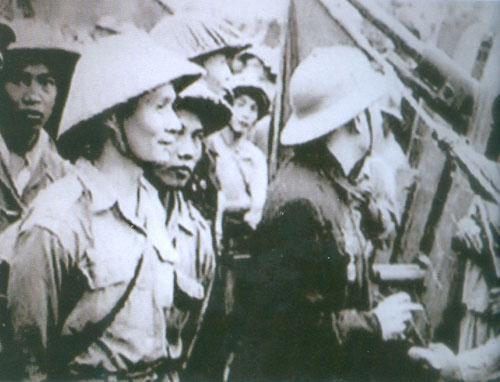 |
|
General and Commander-in-chief Vo Nguyen Giap examining 37mm anti-aircraft artillery, early March 1954. |
 |
|
Soldiers hauling in artillery for the Dien Bien Phu Campaign, 1954. |
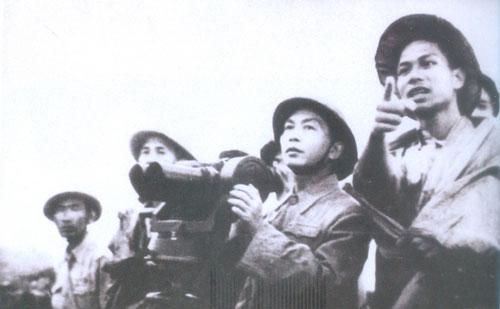 |
|
General Vo Nguyen Giap supervising the Dien Bien Phu Front, 1954. |
 |
|
The Party Committee and the Command for the Dien Bien Phu campaign met in Muong Phang, where they reaffirmed their decision to annihilate the French entrenched camps at Dien Bien Phu, April 22, 1954 |
 |
|
The Command for the Dien Bien Phu campaign examining the battle plans. |
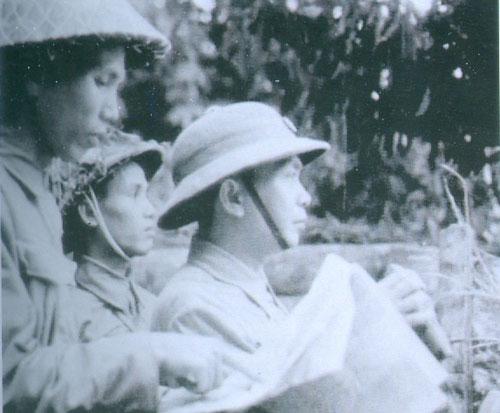 |
|
General Vo Nguyen Giap inspecting the battlefield preparing for Strike Hour |
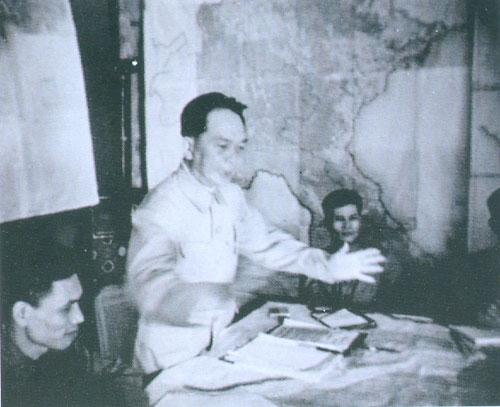 |
|
General Vo Nguyen Giap ordered his troops to open fire at 17:30 on March 13, 1954. |
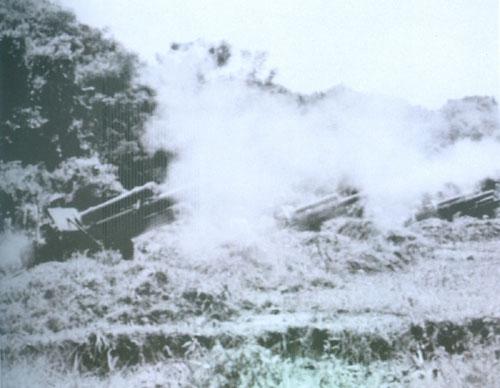 |
|
Vietnamese artillery fired on Him Lam Entrenched Camp, opening the Dien Bien Phu Campaign on the afternoon of March 13, 1954 |
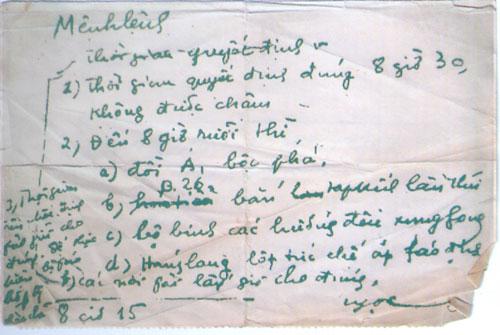 |
|
General Vo Nguyen Giap’s order for the all-out offensive |
|
|
 |
|
Vietnamese soldiers fiercely attacking and seized the Him Lam Entrenched Camp |
|
|
|
Vietnamese soldiers attacking the Muong Thanh center |
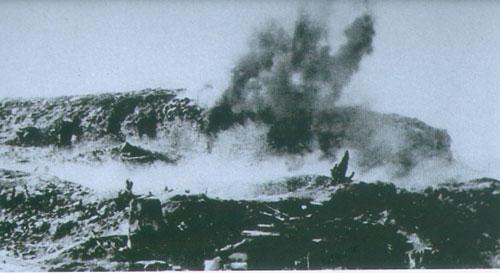 |
|
A TNT charge weighing 900 kilos exploded at 20:30 on May 6, 1954 on Hill A1 (Eliane) as part of the Command’s order signaling the all-out offensive of the Vietnam People’s Army at Dien Bien Phu. |
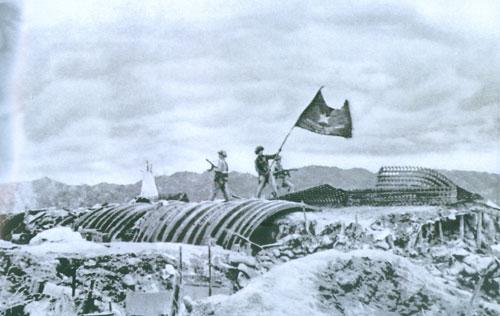 |
|
The "Determine to Fight, Determine to Win" flag flying from French General de Castries’ bunker |
 |
|
General de Castries and the French Command captured at Dien Bien Phu, 1954 |
 |
|
A panorama of the Dien Bien Phu battlefield at 17:30 on May 7, 1954 |
|
|
|
More than ten thousands soldiers on the French side taken as prisoners of war at Dien Bien Phu Entrenched Camps, 1954 |
 |
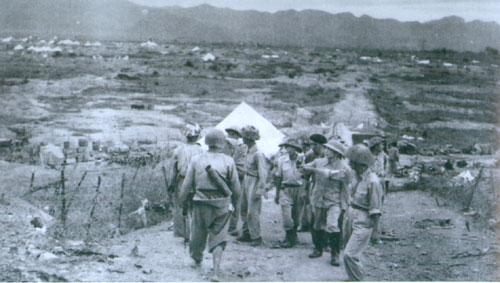 |
|
General Vo Nguyen Giap visiting the Dien Bien Phu battlefield shortly after the victory |
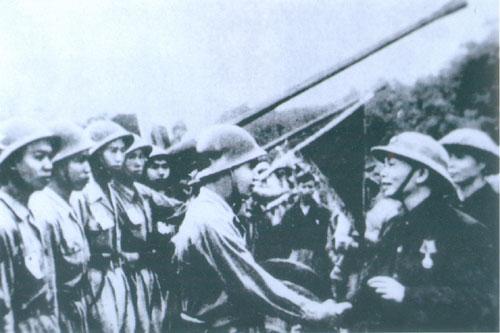 |
|
General Vo Nguyen Giap commending artillery soldiers who made remarkable contributions to the Dien Bien Phu victory |
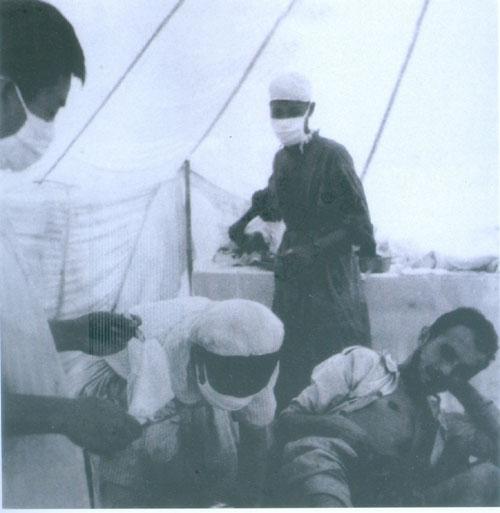 |
|
In accordance with the humanity policy of the Party and the Vietnam government, General Vo Nguyen Giap ordered Vietnamese military doctors to offer immediate medical aid to the French prisoners of war |
General Vo Nguyen Giap has written about the victory at Dien Bien Phu:
"Our people can be proud that under the leadership of our Party headed by revered President Ho Chi Minh we were witness to this great truth: A colonized people suffering under repression stood up, unified in opposition. They had been determined to struggle for independence, freedom and socialism and they had sufficient ability to defeat the strong, invading army of an imperialist country.
"Dien Bien Phu will forever go down into history of struggle for the liberation of our nation and the liberation of people in the nations of the world".
Regarding Dien Bien Phu, General de Castries has also written: "I admitted that General Giap was far more experienced and wiser than General Cogny and General Navarre. It was my pleasure to be General Giap’s opponent and become "the vanquished" of such a talented man. I admire and respect him".
 |
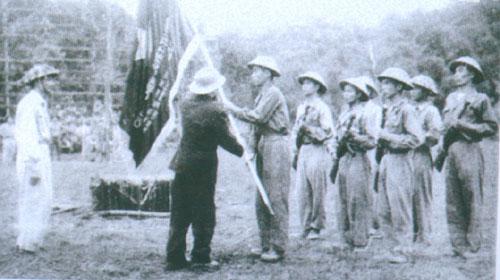 |
|
General Vo Nguyen Giap awarding flags for units that had remarkable exploits in the Dien Bien Phu Campaign, 1954 |
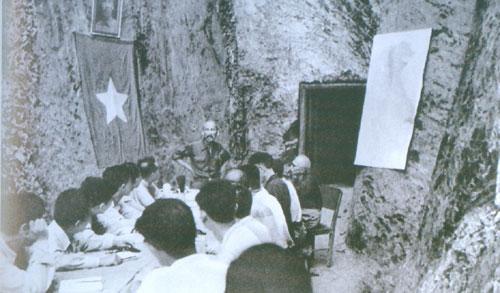 |
|
President Ho Chi Minh chairing a meeting of the Government Council at Hong mountain, Kim Quan commune, Yen Son district, Tuyen Quang province, after the Dien Bien Phu victory, July 2, 1954 |
 |
|
The troop review ceremony for the Dien Bien Phu victory on the battlefield, 1954 |
|
|
|
General Vo Nguyen Giap’s message about Dien Bien Phu on the 50th anniversary of the victory (1954-2004) |
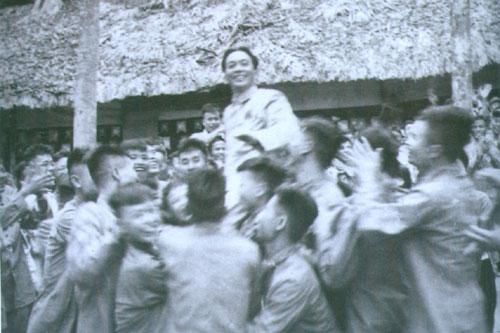 |
|
Soldiers from the Dien Bien Phu campaign lifting General Vo Nguyen Giap onto their shoulders in celebration of victory |
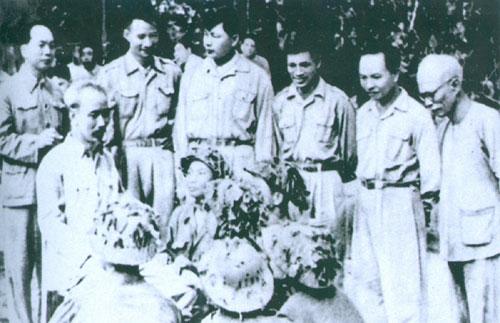 |
|
President Ho Chi Minh, Deputy Head of the Standing Committee of the National Assembly Ton Duc Thang and General Vo Nguyen Giap commended officers and soldiers for their excellent accomplishments in the Dien Bien Phu Campaign |
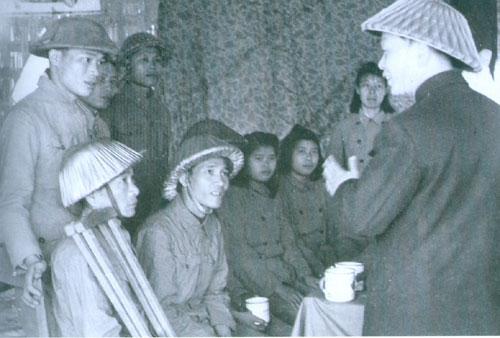 |
|
General Vo Nguyen Giap visiting wounded soldiers after the Dien Bien Phu victory, 1954 |
.jpg) |
|
General Vo Nguyen Giap visiting soldiers and officers who voluntarily fought in the Cambodian battlefield, returning to Vietnam following the Geneva Agreements, 1954 |
Source: "Commander-in-chief General Vo Nguyen Giap" Book
- The strategic 1953-1954 Winter-Spring Campaign (25/10/2013)
- The Bien Gioi (Border) Campaign 1950 (27/10/2013)
- The first General of Vietnamese People's Army (27/10/2013)
- From national resistance to Dien Bien Phu Victory (29/10/2013)
- Pre-uprising period, general uprising & establishment of democratic republic of Vietnam (26/10/2013)
- International friendship (26/10/2013)
- Vo Nguyen Giap: Vietnam’s last centurion* (27/10/2013)
- Hometown, youth and revolution (23/10/2013)
- General Vo Nguyen Giap's devotion to science-technology, culture and art (19/10/2013)
- An exemplary man (19/10/2013)


